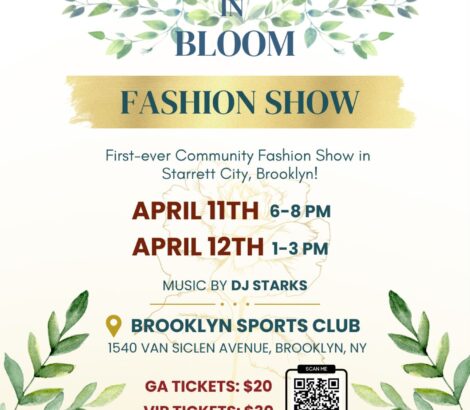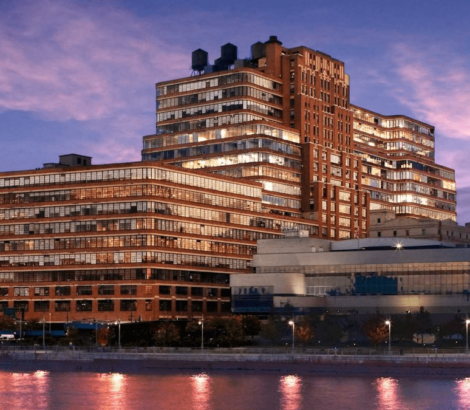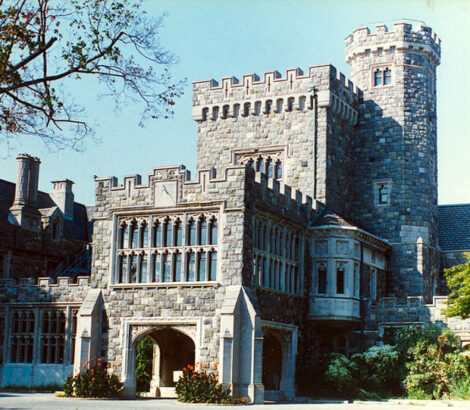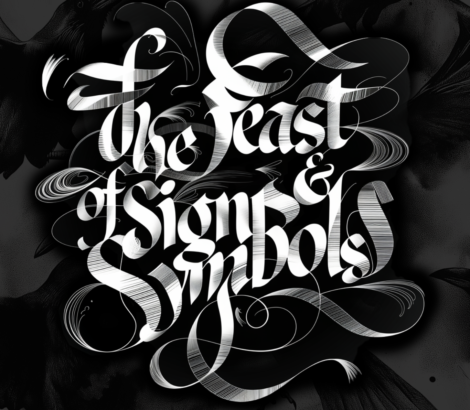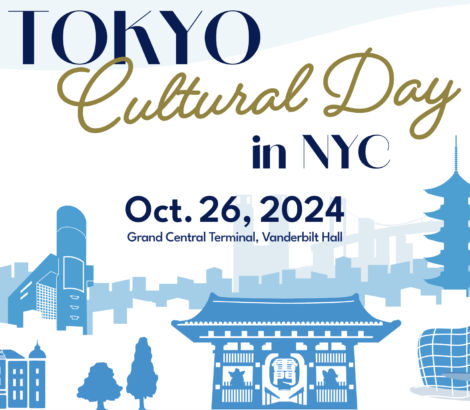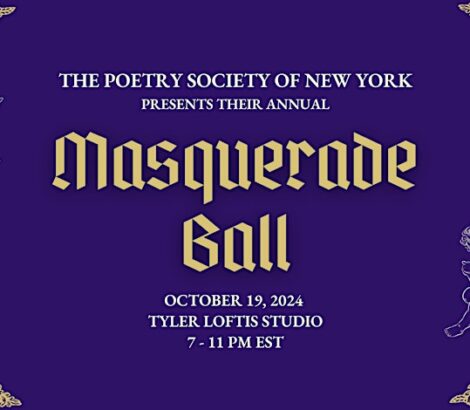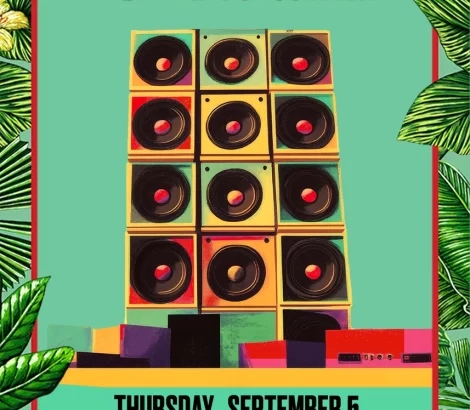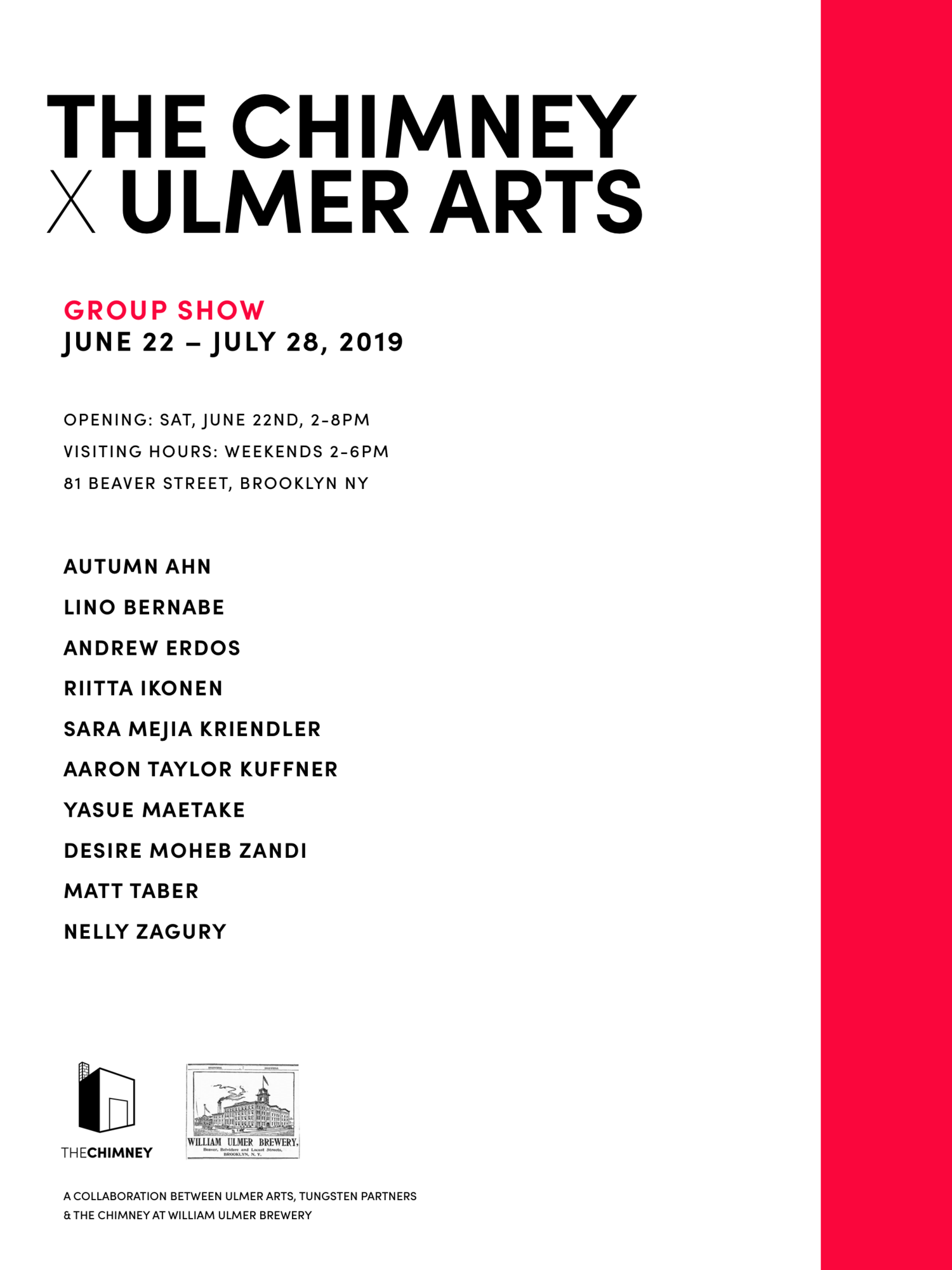 Join us this Saturday for the Chimney’s opening of “The Chimney x Ulmer Arts” – a group exhibition curated by Clara Darrason & Jennifer Houdrouge and organized in collaboration with Ulmer Arts and Tungsten Partners.
Join us this Saturday for the Chimney’s opening of “The Chimney x Ulmer Arts” – a group exhibition curated by Clara Darrason & Jennifer Houdrouge and organized in collaboration with Ulmer Arts and Tungsten Partners.
The exhibition is being held in the historic William Ulmer Brewery located in Bushwick and runs through July 28th. We’ll be there serving Bluejacket Brewery craft beers during the opening reception.
The William Ulmer Brewery is an adaptive reuse project located at 81 Beaver Street, on the corner of Belvidere and Beaver Streets in Bushwick, Brooklyn. The 60,000 square foot structure was constructed in 1872 as one of Brooklyn’s oldest breweries in the Rundbogenstil Romanesque revival style by architect Theobald Engelhardt. This historic building symbolizes an era of Brooklyn’s history that defined and helped to develop the neighborhood of Bushwick.
The former Ulmer Brewery will be reimagined and historically renovated to house an ecosystem of modern creative users with a shared sense of values and community. Through this revival, Ulmer Arts marks the first effort to fully utilize this property since the Brewery ceased operations during Prohibition a century ago. For this first collaboration, The Chimney takes over six large rooms in order to present large installations and works by nine American and international artists.
On the ground floor, the first room welcomes the works of Yasue Maetake (Japan) and Andrew Erdos (USA). Using glass as his primary medium, Erdos explores the possibility of land formation, the erosion of matter and the passage of time on our landscapes. Maetake’s mixed-media sculptural works investigate the liveliness of matter, artifact’s material and expressive qualities as well as the infinite possibilities of forms.
The second room contains the works of three artists: Desire Moheb Zandi (Turkey), Riitta Ikonen (Finland) and Sara Mejia Kriendler (USA and Colombia).
Desire Moheb Zandi’s works Volcanic (2019) and Emancipation/Plantasia (2019) consist in two suspended tapestries made of various textiles such as wool, rubber, plastic, paint and paper. From an early age, the artist has found both personal and cultural identity through the hours spent watching her grandmother weave in her childhood home, Turkey. Influenced by her personal history with textiles and its countless sculptural possibilities, Moheb Zandi combines found materials with traditional modes of textile fabrication. By manipulating the surface of the fabric and playing with formal arrangement, Moheb Zandi constructs horizontally-layered visual compositions.
Part of a series of works titled “Me Again” about climate change, Riitta Ikonen’s wearable fabric sculptures represent an insect at a magnified scale namely, a moth and a beetle. Her fascination for the natural realm is accompanied by an ecological concern: the increasing disappearance of one of the most mysterious and overlooked species – insects. Ikonen expressed: “Our eyes and ears might not pick up all the fragile achievements of the small and quiet ones.” By creating pieces of imperceptible creatures integrated within a human habitat, Ikonen celebrates the fragile beauty of our ecosystem and the incredible diversity of the million species living on our planet.
In “Running Out of Ink,” Sara Mejia Kriendler weaves palm leaves through the gridded pages of a notebook. This series is inspired by Robin Crusoe – the story of a castaway stranded on a deserted island for 28 years. To stay sane Robinson keeps a journal using ink he salvaged from his ship before it sank. But he is running out of ink. This series imagines what happens when he does. Kriendler seeks to reconnect with raw materials as opposed to manufactured ones. Facing the possibility of environmental collapse, this work considers our dependence on the manufactured and imagines what could happen when we are forced to start from scratch.
In the following third room, Matt Taber (USA) created a table whose surface appears as a static cut-out of the ocean. As an object of design and art, Taber approaches the boundary of an object of utility that, by design, attempts to reconcile its entropic environment. For Taber, the sea is a platform. Without a fixed architecture, its movements adhere to the tidal forces of the Moon and the Sun acting on the Earth. As algorithms alienate our behaviors, a cybernetic solitude aligns us with the sailor who encounters the universal mind and memory “from swerve of shore to bend of bay.” Named after Marcel Broodthaers work of the same title, “A Voyage on the North Sea” is a platform for others to conflate modern life with the systemic mysticism that guides our desires.
On the second floor, Aaron Taylor Kuffner (USA) created an immersive and sonic installation of his ongoing Sonic Kinetic Sculptures called Gamelatrons. Kuffner’s Gamelatrons are made of traditional bronze, brass and iron instruments. Drawing from Indonesia’s gamelan tradition, Kuffner roboticizes these gongs with newly designed musical compositions. Turning ancient instrument such as Indonesian Gamelan into hand-crafted sculptures, the artist exposes viewers to the profound nature of musical resonance, its effect on the body and psyche and retrieves the spiritual objective of ancient Indonesian ceremonies. This room provides a respite for visitors.
In the room to the left, the paintings of Lino Bernabe (USA and Cuba) explore the notion of time and the effect of the moving picture through the medium of painting. By applying concepts that pertain to the field of cinema, Bernabe’s paintings animate under RGB sequenced lights. He uses colored light to divide one image into three images. Red light is scene one, green light is scene two, blue light is scene three. The sequencing of RGB light produces an unfolding narrative, enabling the two-dimensional paintings to expand into the dimension of time. The motion of figures perceived from the change in colored light frequencies produces a narrative scene that questions the sociological and physiological implications of each primary color: red, cyan, green, magenta, blue and yellow. The painted scenes are fleeting moments observed and witnessed by the artist in the streets of his hometown in Miami.
On the third floor, Nelly Zagury (France) presents The Giant Stalker & The Cannibal Flower (2019) – a 3 dimensional painting inviting the audience to experience the theatrical aspect of her dreams. Playing with iconic myth, surreal characters and erotic fantasy, Nelly Zagury’s works are filled with symbolism that furthers one’s understanding of femininity and eroticism.
The Chimney is also pleased to present its second publication “a tall action is not a height” made on the occasion of Autumn Ahn’s (USA) performance-based exhibition at the Chimney in 2017. Acting as an extension of her exhibition, the publication reveals Ahn’s performance under a new light and offers insights in regards to her creative process. The publication includes essays by the scholar Asli Seven, the Chimney directors, Clara Darrason and Jennifer Houdrouge, the artist Autumn Ahn and the curator Anissa Touati. Photographs of Autumn Ahn’s performance will also be on view.
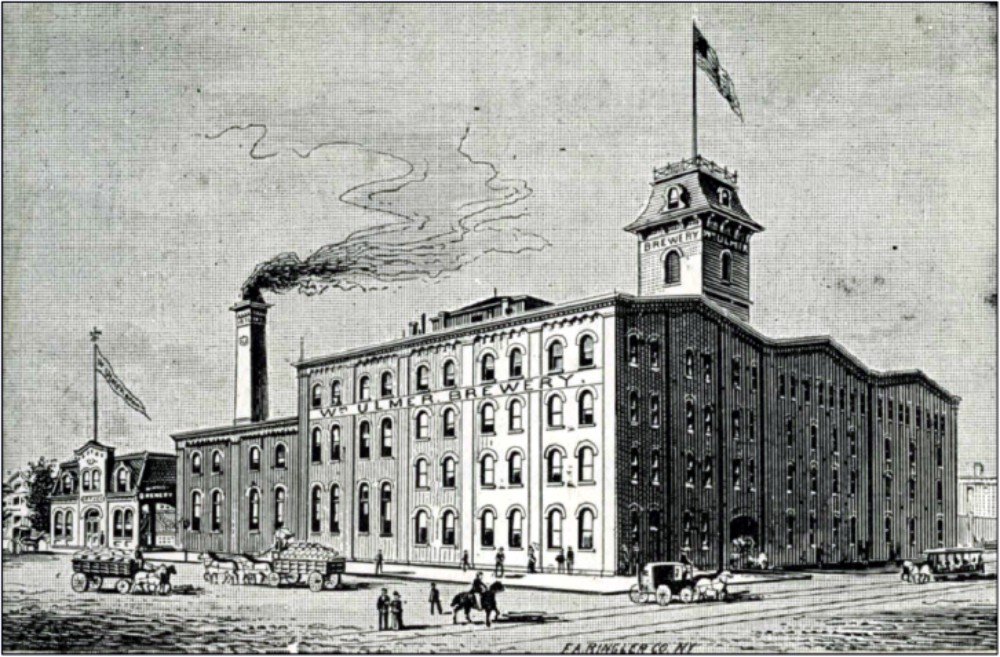 ABOUT THE BREWERY
ABOUT THE BREWERY
A New York City Landmark, the William Ulmer Brewery was built in 1872 in the Rundbogenstil Romanesque revival style. Designed by architect Theobald Engelhardt, the brewery is located on the corner of Belvidere and Beaver in Bushwick, Brooklyn. Though the brewery has been closed since Prohibition, the building remained under the ownership of the Ulmer family until 1952. The main brew house is 60,000 square feet and is currently a mixture of industrial loft spaced on the upper floors. The building’s three basements extend 50 feet below grade, with the cellars comprising another 18,000 square feet with vaulted masonry tunnels and chambers
ABOUT ULMER ARTS
Ulmer Arts is a collaboration between builders and artists. Together, Macarthur Holdings + Rivington Company + Brightsky Investments is the partnership behind the historic renovation of the William Ulmer Brewery. In New York City, the partnership has over 50 years of experience revitalizing historic properties.
Please follow along at www.ulmerarts.com for updates on this project.
ABOUT TUNGSTEN PARTNERS
Tungsten Partners is an independent and diversified holdings company with minority and wholly owned interests in a variety of operating companies in several disciplines including: hospitality, art, media, fashion, beverage, design, consumer products and real estate.
Tungsten Partners is the founder of the art publication Art Observed, was prior to its divestiture, the longest standing owner of the Ace Hotel brand, and has active equity interests in over 30 companies. Tungsten Partners is a creative advisor and minority owner of the William Ulmer Brewery Project.

